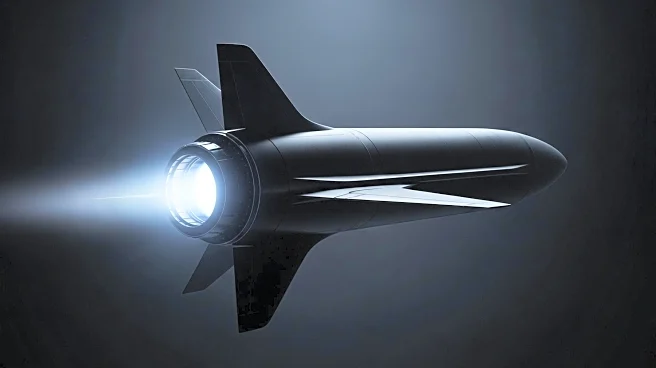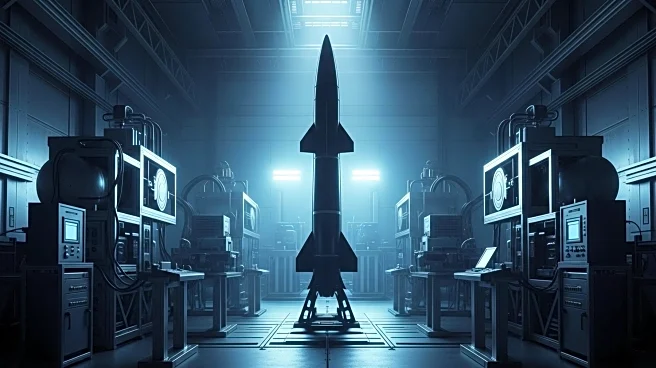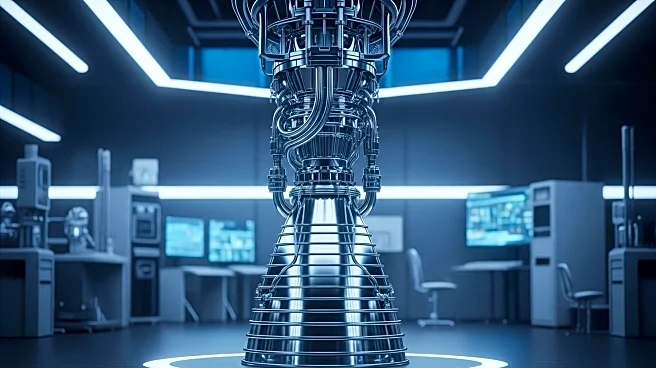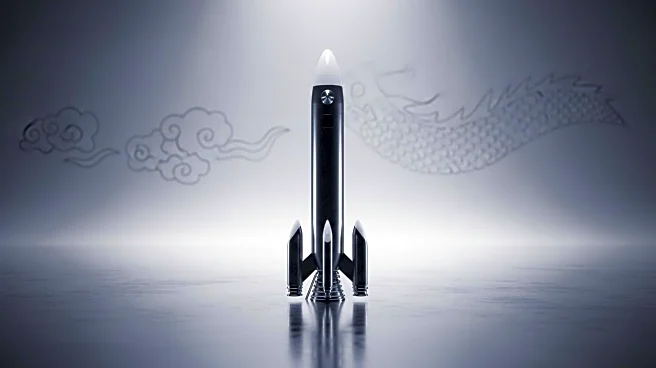What's Happening?
North Korea has conducted the final ground test of a solid-fuel rocket engine for a long-range ballistic missile, marking a significant advancement in its missile technology. The test, observed by North Korean leader Kim Jong Un, showcased an engine capable of producing 1,971 kilonewtons of thrust, which is more powerful than previous models. This development is part of North Korea's ongoing efforts to enhance its long-range weapons capabilities, including the potential development of multi-warhead systems. Analysts suggest that North Korea may conduct another intercontinental ballistic missile (ICBM) test by the end of the year, coinciding with a major ruling party congress in early 2026.
Why It's Important?
The advancement in North Korea's missile technology poses a potential threat to the continental United States, as the new solid-fuel engines allow for quicker and more concealed missile launches. This development could pressure the U.S. to reassess its defense strategies and diplomatic approaches towards North Korea. Additionally, North Korea's strengthened ties with Russia and China could complicate international efforts to curb its nuclear ambitions, potentially leading to increased geopolitical tensions in the region.
What's Next?
North Korea's continued missile development may lead to further tests and demonstrations of military strength, particularly as Kim Jong Un seeks to bolster his position ahead of the ruling party congress. The U.S. and South Korea are closely monitoring these developments, which could prompt additional diplomatic or military responses. The evolving situation may also influence future negotiations between North Korea and the U.S., as Kim aims to leverage his strengthened alliances with Russia and China.













